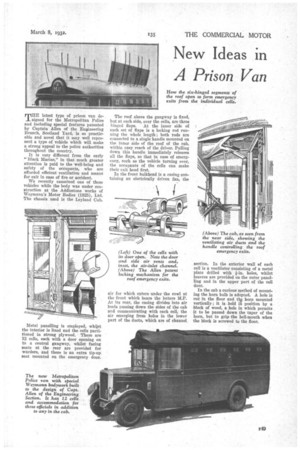New Ideas in A Prison Van
Page 107

If you've noticed an error in this article please click here to report it so we can fix it.
MBE latest type of prison van de_ Signed for the Metropolitan. Police and including special features patented by Captain Allen of the Engineering Branch, Scotland Yard, is so practicable and novel that it may well represent a type of vehicle which will make a strong appeal to the police authorities throughout the country.
It is very different from the early "Black Merles," in that much greater attention is paid to the well-being and safety of the occupants, who are afforded efficient ventilation and means for exit in case of fire or accident We recently examined one of these vehicles while the body was under construction at the Addlestone works of Weymann's Motor Bodies (1925), Ltd. The chassis, used is the Leyland Cub.
Metal panelling is employed, whilst the interior is lined and the cells partitioned in strong plywood. There are 12 cells, each with a door opening on to a central gangway, whilst facing seats at the rear are provided for warders, and there is an extra tip-up seat mounted on the emergency door. The roof above the gangway is fixed, but at each side, over the cells, are three hinged flaps. At the inner side of each set of flaps is a locking rod running the whole length ; both rods are connected to a single handle mounted on the inner side of the roof of the cab, within easy reach of the driver. Pulling down this handle immediately releases all the flaps, so that in case of emergency, such as the vehicle turning over, the occupants of the cells can make their exit head first.
In the front bulkhead is a casing containing an electrically driven fan, the air for which enters under the cowl at the front which bears the letters M.P. At its rear, the casing divides into air leads passing down the sides of the cab and communicating with each cell, the air emerging from holes in the lower part of the ducts, which are of channel section. In the exterior wall of each cell is a ventilator consisting of a metal plate drilled with i-in. holes, whilst louvres are provided on the outer panelling and in the upper part of the cell door.
In the cab a curious method of mounting the horn bulb is adopted. A hole is cut in the floor and thi horn mounted vertically ; it is held in position by a block of wood, a hole in which permits it to be passed down the taper of the horn, but to grip the bell-mouth when the block is screwed to the floor.












































































































































































